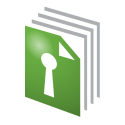Tips For Managing Cash Flow in a Small Business
Running a small business is exciting. You get to bring your ideas to life and serve customers in your own way. But there’s one thing that often feels tricky, managing cash flow. Cash flow simply means the money that moves in and out of your business. If more money is coming in than going out, you’re in good shape. If not, things can get tight quickly. Good cash flow helps you pay bills, keep stock, and grow your business steadily.
Here are some easy-to-follow tips to help you manage cash flow better in your small business.
Understand Your Cash Flow
Before you can manage cash flow, you need to understand how it works in your business. This means knowing how much money is coming in from sales and how much is going out for expenses. You should also know when this money is moving. Sometimes, you might sell a product but not get paid right away. Or you might have to pay for supplies before selling anything.
A simple way to track this is by using a cash flow statement. It shows money coming in (inflows) and money going out (outflows) over a certain time — weekly, monthly, or quarterly. You don’t need fancy software. A simple spreadsheet will work to start.
Send Invoices Quickly and Follow Up
If you offer services or sell products on credit, it’s important to send invoices quickly. The sooner you send an invoice, the sooner you can get paid. Always include clear payment terms, such as “Payment due in 15 days.” Be polite but firm when following up on late payments. Sometimes, clients just need a reminder.
You can also make it easy for customers to pay. Offer different payment methods like bank transfer, credit card, or digital payments. If paying is easy, you’re more likely to get your money faster.
Keep Your Expenses in Check
When business is going well, it’s tempting to spend more. You might want to upgrade equipment, hire more staff, or move into a bigger space. While it’s good to invest in your business, be careful not to overspend. Always ask yourself if the purchase is necessary and if you have enough money to cover it.
It’s smart to review your monthly expenses. See if there are any costs you can cut or reduce. Maybe you’re paying for software you don’t use anymore. Or you can get better prices from another supplier. Little savings can add up over time.
Build a Cash Reserve
It’s always a good idea to have some money set aside for tough times. This is called a cash reserve or rainy-day fund. Even saving a small amount each month can help. This extra money can cover you if sales slow down or if a big expense pops up out of nowhere.
Having a cash reserve gives you peace of mind. You won’t have to panic or borrow money in a rush when things get tight.
Plan for the Future
Looking ahead can help you avoid cash flow problems. Try to forecast your income and expenses for the next few months. If you expect a slow season, you can plan by cutting costs or finding new ways to bring in sales. If you know a big bill is coming, you can set money aside for it.
Talking to an accountant can also help. They can show you trends in your business and help you make a plan. Even if you do the day-to-day bookkeeping yourself, having an expert give you advice once in a while is smart.
Offer Discounts for Early Payment
If you work with clients who often pay late, you can encourage faster payments by offering a small discount. For example, you could offer 2% off if they pay within 10 days. This can speed up cash coming in and keep your cash flow steady.
Manage Inventory Wisely
If you sell products, inventory can tie up a lot of your money. Buying too much stock means money is sitting on shelves instead of in your bank account. On the other hand, not having enough stock can mean missed sales. Try to strike a balance.
Keep track of what sells quickly and what doesn’t. Order more of your best-sellers and less of slow-moving items. Using inventory software can help, but even a simple list can work when you’re just starting.
Stay on Top of Taxes
Taxes can surprise small business owners. If you forget to set aside money for them, you might find yourself short when it’s time to pay. Make it a habit to save a percentage of your income for taxes throughout the year. You can open a separate bank account just for tax savings. This way, you won’t be caught off guard when tax time comes.
Borrow Carefully
Sometimes, borrowing money is necessary, maybe to buy equipment or grow faster. That’s okay, but borrow only what you need and be clear on the terms. Look for loans with good interest rates and reasonable payment plans. Also, avoid using personal credit cards for business expenses if you can. High-interest debt can quickly hurt your cash flow.
Keep Communication Open
If you ever face a cash crunch, don’t hide it from your suppliers or lenders. Talk to them early. You might be able to work out a payment plan or get more time to pay. Most people will understand if you’re honest and proactive.
Final Thoughts
Managing cash flow isn’t just about making more money, it’s about handling the money you already have wisely. By tracking your cash, controlling expenses, planning ahead, and building reserves, you give your small business a strong foundation. It takes time and practice, but with steady habits, you can avoid surprises and keep your business healthy.




